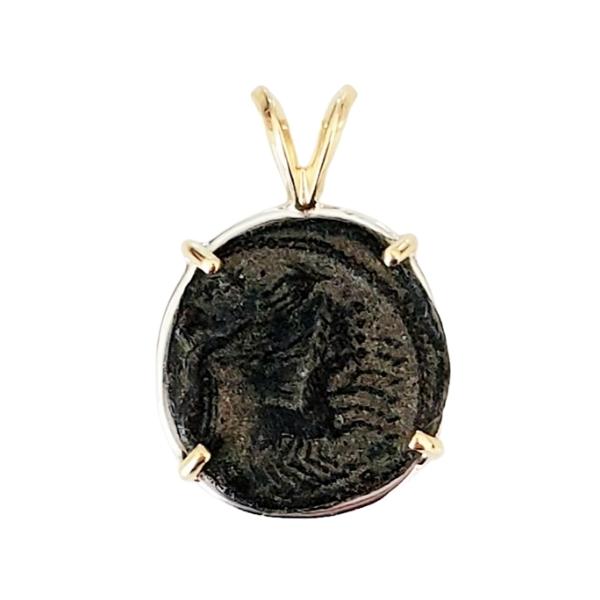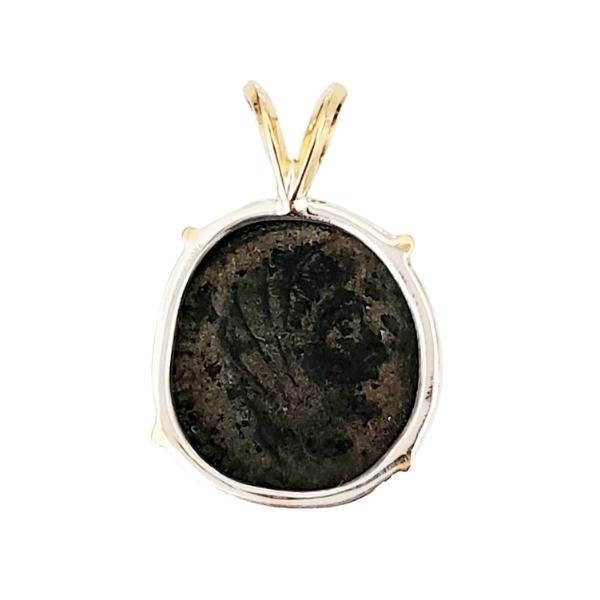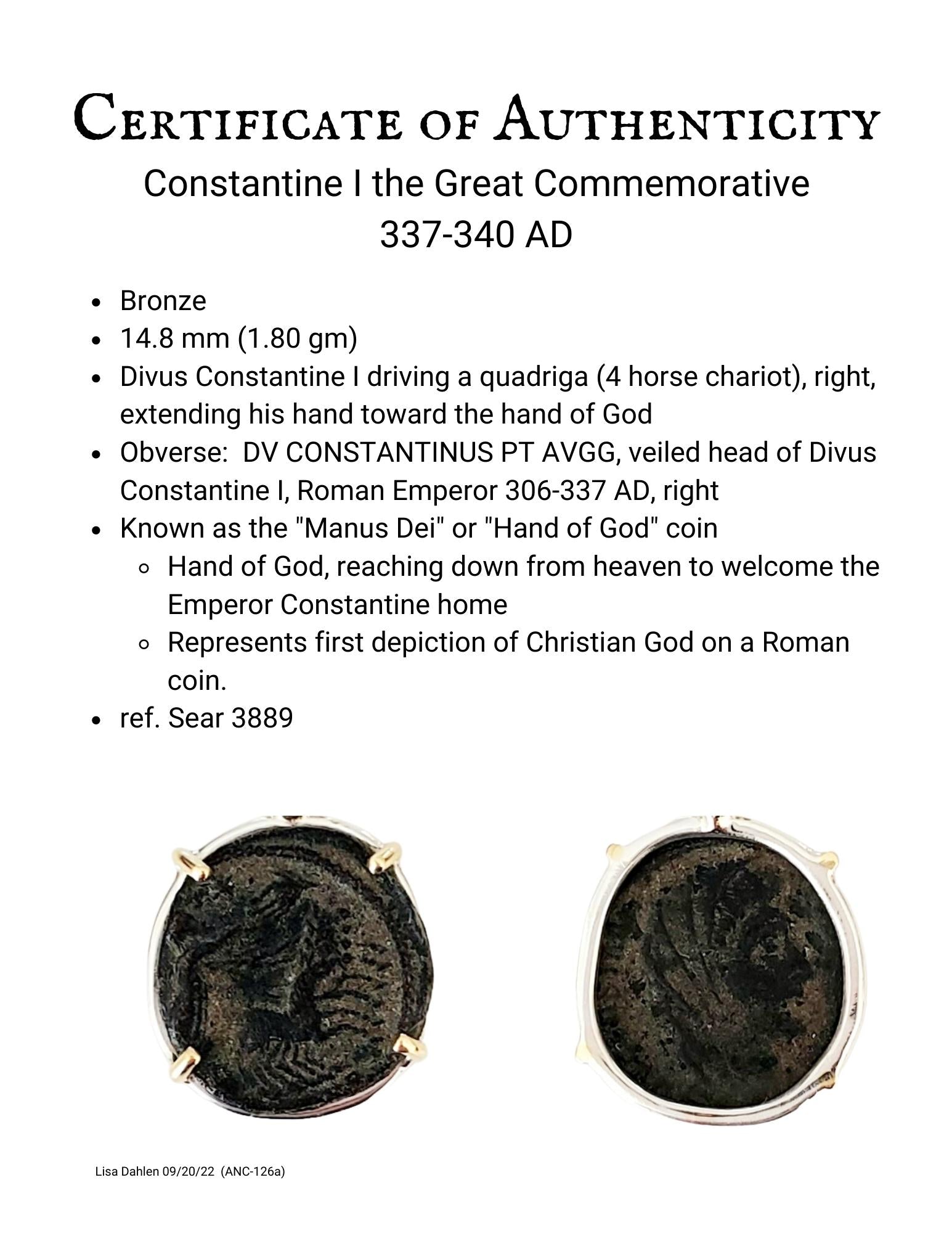


Constantine the Great Commemorative Coin 337-340 AD (126a)
"Manus Dei" - the "Hand of God"
Ancient Roman bronze coin with a desert patina. The hand of God reaches down toward Emperor Constantine, driving a quadriga (four-horse chariot), welcoming him to heaven.
Coin size: 15mm.
Hand-fabricated 18kt recycled gold and sterling silver mount.
One of a kind with a Certificate of Authenticity.
Chain available separately. See Chains
Dated: 347-348 AD
"Hand of God" or "Manus Dei" commemorative coins were struck after Constantine I the Great's death (337 AD). They were the first depictions of a Christian deity on a coin. Constantine is driving a quadriga (four-horse chariot); as Constantine reaches up, the Hand of God reaches down to bring him into heaven. The obverse front of the coin is an image of the veiled Constantine. In 312 AD, Constantine made a historical decision by ordering his army to wear a Christian symbol on their shields. He won the battle of the Milvian Bridge and attributed his success to his alliance with the Christian god.A desert patina is formed in a very dry desert climate. The tan areas are lightly cemented on light tan dust and desert sand. It has a lovely aesthetic appeal. Skillfully cleaning the coin removes encrustation, leaving dramatic highlights that emphasize the artwork's beauty.
Choose options



"Manus Dei" - the "Hand of God"
Ancient Roman bronze coin with a desert patina. The hand of God reaches down toward Emperor Constantine, driving a quadriga (four-horse chariot), welcoming him to heaven.
Coin size: 15mm.
Hand-fabricated 18kt recycled gold and sterling silver mount.
One of a kind with a Certificate of Authenticity.
Chain available separately. See Chains
Dated: 347-348 AD
"Hand of God" or "Manus Dei" commemorative coins were struck after Constantine I the Great's death (337 AD). They were the first depictions of a Christian deity on a coin. Constantine is driving a quadriga (four-horse chariot); as Constantine reaches up, the Hand of God reaches down to bring him into heaven. The obverse front of the coin is an image of the veiled Constantine. In 312 AD, Constantine made a historical decision by ordering his army to wear a Christian symbol on their shields. He won the battle of the Milvian Bridge and attributed his success to his alliance with the Christian god.A desert patina is formed in a very dry desert climate. The tan areas are lightly cemented on light tan dust and desert sand. It has a lovely aesthetic appeal. Skillfully cleaning the coin removes encrustation, leaving dramatic highlights that emphasize the artwork's beauty.
